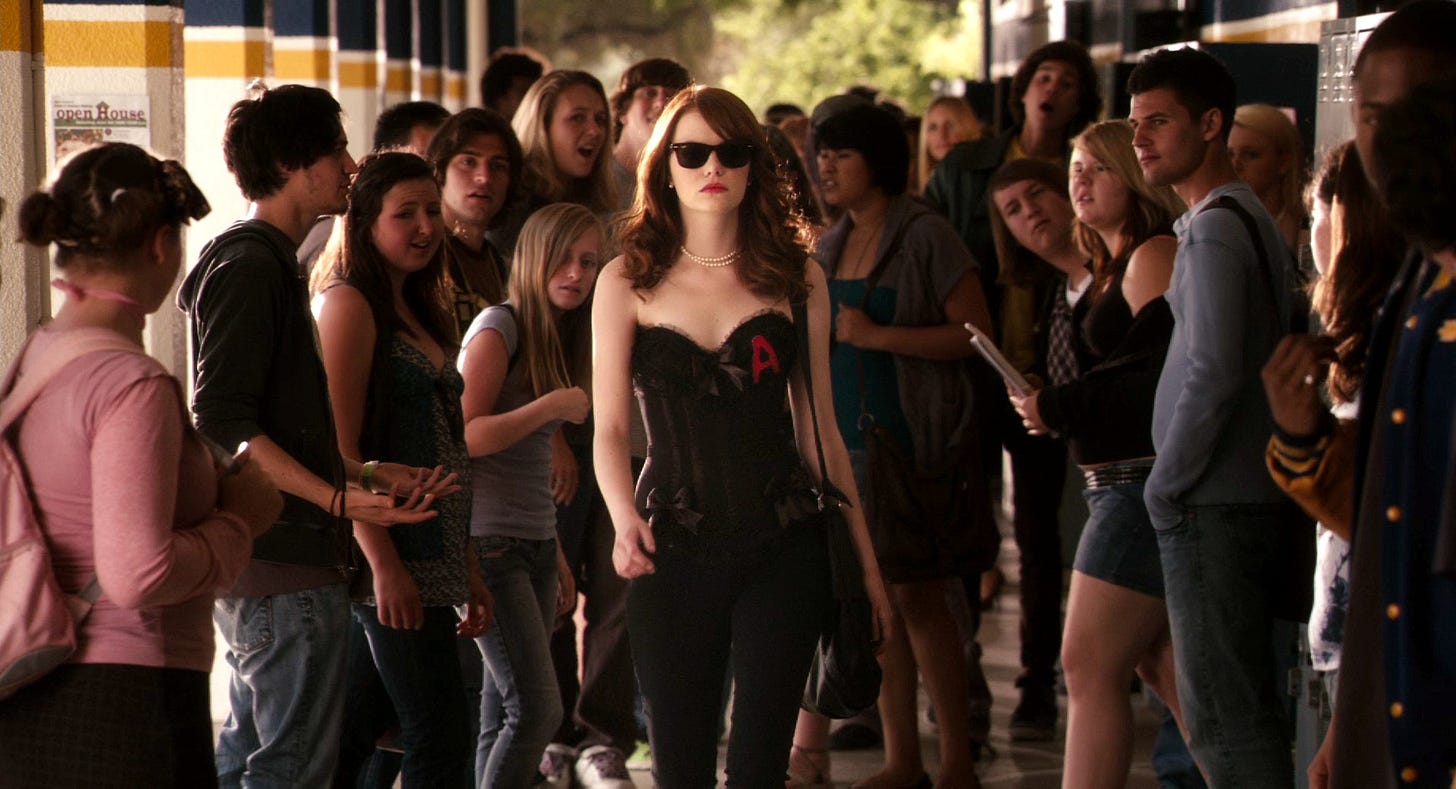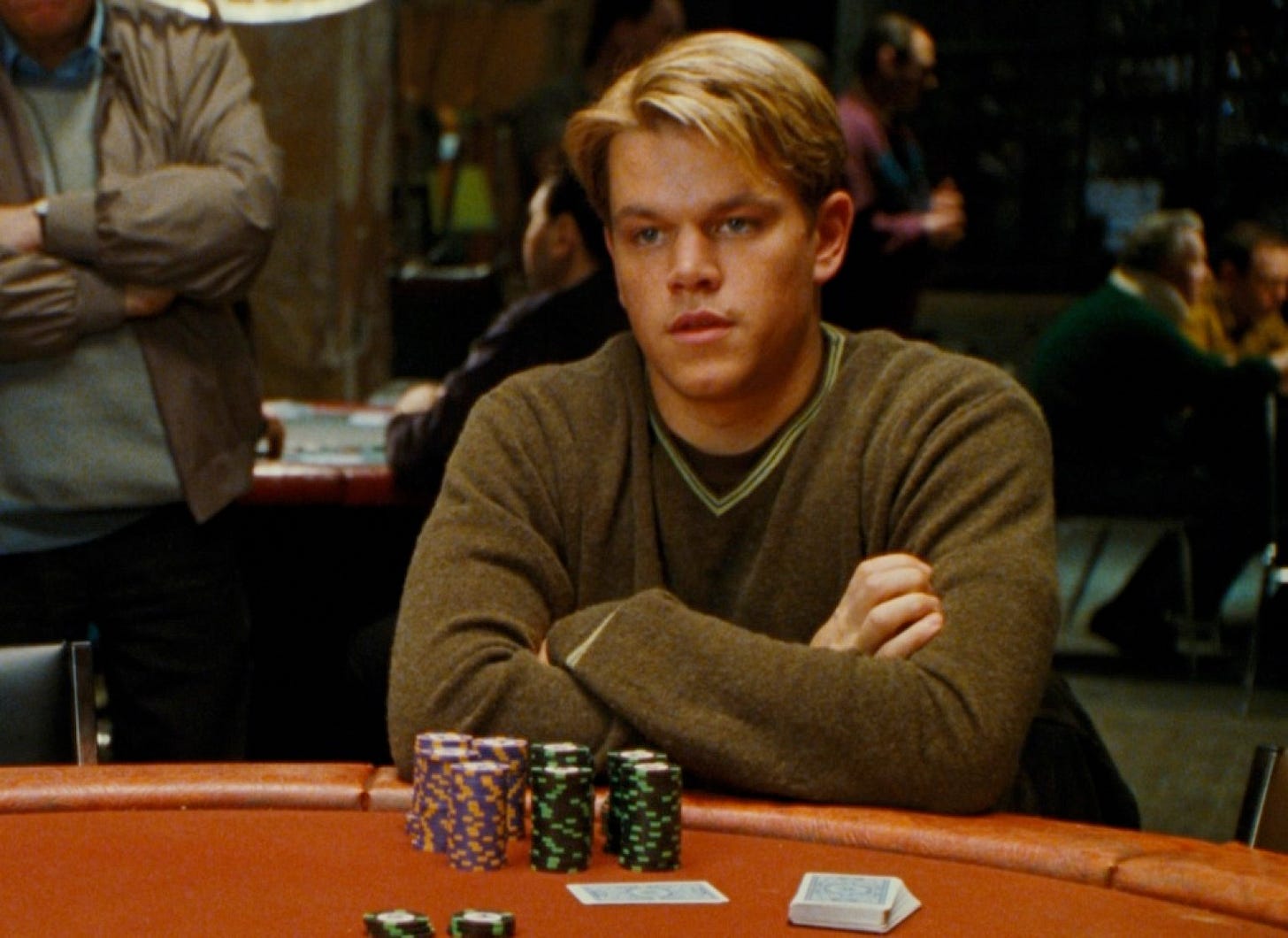Who’s the Best Liar of All?

Cover your face, get ready to cringe – Jim Carey’s about to tell another lie in 1997’s Liar, Liar, and we’re about to enjoy watching it all unravel. This particular movie takes the concept of the lying character to its logical conclusion, taking a great premise and letting it run. We know that the lie is the mainstay of much of film noir and features heavily in courtroom drama, but what about when the liar themselves is the main attraction? There are so many films that use the liar in slightly subtler ways than the Carey classic. Looking at the liar opens up a whole world of fascinating cinema, from plot to character development. The liar works across genres, making a potentially banal film into pure genius, and a possibly formulaic film into the cleverest thing since The 39 Steps.

Olive Penderghast in Easy A
One of the delights of the film liar is the consequence of their lie, the can of worms inevitably opened. Perhaps the cleverest of the last decade’s teen movies, Easy A, both abides by, then subverts the expectations of viewers, proving that a well-aimed lie can bring out other characters’ misconceptions and prejudices. It’s a plot that achieves that old cinematic notion, that film can have a moral or teach a lesson. High school student Olive spends an uneventful weekend, happy that she has dodged a boring camping trip with the parents of her best friend. She gets out of it by telling a lie so surprising and divisive that it sets the student body against her and allows her to change the fortunes of some of her classmates, by way of disaster and a happy ending. The film is based on the Nathaniel Hawthorne’s 19th century novel The Scarlet Letter, but owes as much to the 80’s teen films of John Hughes, according to director Will Gluck, who hid 20 references to Sixteen Candles and Say Anything in the film. Because of the wit and wisdom that normally goes with a great teen movie, Olive’s lie exposes how men and women lie with the same frequency, and a fifth of conversations include at least one porky pie. Combine this with the high emotional stakes world of the teenager and you get a perfect cinematic liar.

Mike McDermott in Rounders
The beauty of the cinematic liar is their versatility as a device. As well as being the dramatic centre of a film, the lie can also work as an integral part of the plot. 1998’s underappreciated Rounders, sees Matt Damon, for the second time in his career, looking inscrutable in a baggy sweater, doing math-related activity. This time he’s poker genius Mike McDermott trying his best to win $30,000 to help out a friend in need. This is definitely a case of the good liar, in both a moral and statistical sense. Studies suggest that we lie to about 30% of the people we meet in a week, so there’s room for some moral ambiguity – or at least some excellent practice. Bluffing his way through games of No limit Texas Hold’em, Mike uses his own ability to lie and mislead, as well as the slip-ups of others to get save his buddy. In this case the liar is not an anti-hero, or even the unwitting victim of a lie. The lie or bluff, is the motor of the plot, it’s almost the point of the entire film, along with Jon Malkovich’s dodgy Russian accent and equally impressive sweater, as McDermott’s gangster Hold’em opponent. There are several memorable scenes in which Damon’s voiceover gives us a lesson in bluffing and clocking others’ “tells”, those physical ticks which show your opponent is lying that poker players employ so often in their game. They can range from a change in breathing to wiggling feet, and naturally, poker pros have the art of spotting them down. This interplay between bluff and counter-bluff provides much of the narrative tension, especially in the final scene. The liar is the victor, because he played the game better and lied better than the rest of the room.

Roger “Verbal” Kint in The Usual Suspects
It would almost be a shame to have too detailed a discussion on this film, and the liar at its heart. However, ‘Verbal’ is a classic cinematic liar so it would be a shame not to give him his due. As played by Kevin Spacey, he could be cinema’s most accomplished liar. This may be the moment for you to get hold of this fantastic film and come back when you’ve taken it all in. If not, let’s enjoy the genius in print. As we listen, along with Agent Dave Kujan, to Kint’s tale of fencing stolen goods and the mysterious Hungarian villain Keyser Söze, we don’t see him flinch. In this case there is no ‘tell’, no twitchy body language. And why would there be, if he’s telling the truth. In fact, he passes almost every test, except the most obvious – he has every detail of his story to a tee. Paradoxically, what seems like a failsafe strategy is a dead giveaway. When Kujan finally spots the subterfuge though, it’s too late. Once again, the liar is the star, and his actions lead us by the nose through the film. In The Usual Suspects it feels like the liar character is in control not only of the lie, but of the whole narrative.
I suppose an interesting question to ask at this point is, is film the biggest liar of all? Can I get a bit meta for a second? What all these films have in common is the necessity of the suspension of disbelief, where we go along with the universe of the story to be entertained and gripped. By accepting the premise that films like Suspects offer, you allow the film to work on you, you allow it to exist. When film lies badly, it’s disturbing as well as disappointing. A case in point is slightly strange CGI, which can be off-putting and takes us straight to Uncanny Valley be fun to be a film buff and see where a film is going, or anticipate the formula. But for real enjoyment, to get lost in the story, isn’t a good film lie what we all want?


